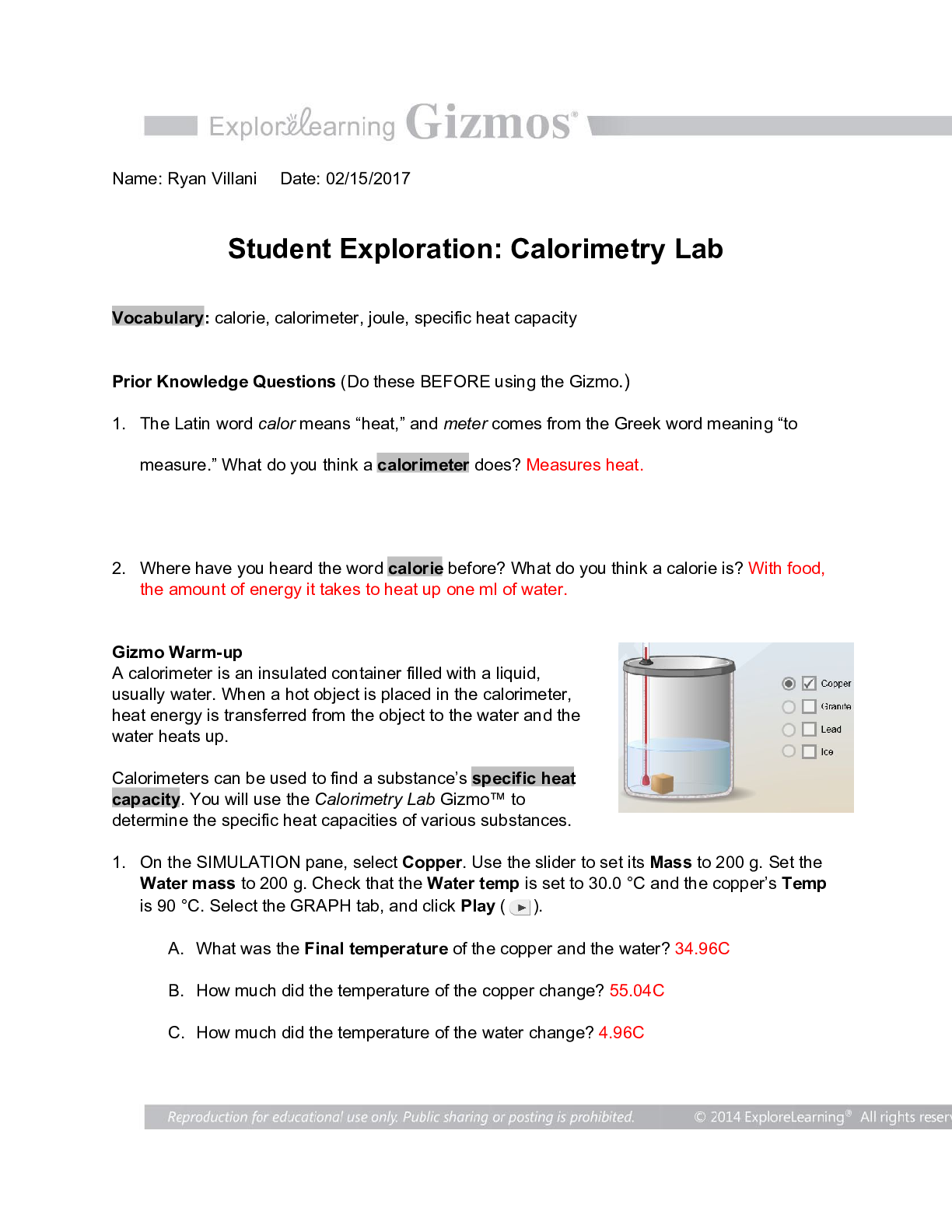Student Exploration: Calorimetry Lab with verified answers
Course
Subject
Chemistry
Category
Questions and Answers
Pages
12
Uploaded By
ATIPROS
Preview 4 out of 12 Pages


Download all 12 pages for $ 8.84
Reviews (0)
$8.84
